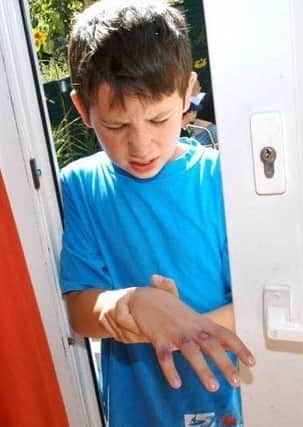First aid: How to deal with closed fractures


A break or crack in a bone is called a fracture. In a closed fracture the skin remains intact; however, bones might be displaced causing internal bleeding and the casualty might develop shock.
Recognising a fracture:
There may be swelling, deformity or bruising at the fracture site and the casualty may suffer pain or difficulty moving the area.
Shortening, bending or twisting of a limb.
Advertisement
Hide AdAdvertisement
Hide AdSigns of shock, especially if the thigh or pelvic bones are fractured.
Follow these simple steps to help:
Advise the casualty to keep still. n Support the joints above and below the injured area with your hands until it is immobilised with a sling or bandages.
Place padding around the injury for extra support and arrange for the casualty to be taken to hospital; an arm injury can be transported by car, however, for a leg injury call 999/112 for emergency help
For firmer support, secure the injured part to an unaffected part of the body.
For upper limb fractures, immobilise the arm with a sling.
Advertisement
Hide AdAdvertisement
Hide AdFor lower limb fractures, move the uninjured leg to the injured one and secure with bandages – always tie the knots on the uninjured side
Treat for shock if necessary but do not raise an injured leg. Elevate an uninjured limb if shock is present. Monitor vital signs while waiting for help to arrive and check circulation beneath bandages or slings every 10 minutes. If circulation is impaired, loosen the dressing.
The St John Ambulance app is available free on smartphones and the website (sja.org.uk) offers demo videos, an interactive game and lots of free advice.
For more information about first aid courses, please call 0303 003 0101.